As a pest management professional (PMP), how extensive is your knowledge of opossums? When speaking with customers who are experiencing problems with this animal, a few interesting facts will help you build credibility, convey your knowledge and professionalism, and foster good customer relations. These conversation points and confidence builders will help to steer the dialogue away from the unpleasant business at hand: humanely dealing with a nuisance animal problem.
- The only endemic American opossum, Didelphis virginiana Kerr, received its common name opossum from Capt. John Smith of the Jamestown Colony in Virginia. The name is derived from apasum, a Virginia Algonquian word meaning “white beast.”
- The first reference to the opossum in literature occurred in 1610 with the publication of A True Declaration of the Estate of the Colonie in Virginia. It contains this statement: “There are…Apossouns, in shape like piggies.”
- Prior to European settlements in North America, the Virginia opossum was found primarily in the southeastern United States. Based on studies of several archeological sites, this animal was a food source for the indigenous people that inhabited this region.
- The direct ancestors of the Virginia opossum are believed to have evolved in South America.
-
In 1792, Robert Kerr provided the first accurate description of the opossum, which finally established the official scientific name of the Virginia opossum, which is Didelphis virginiana Kerr.
- The genus name Didelphis is derived from the Greek prefix di (meaning two) and the Greek word delphys (meaning womb). This is in reference to the reproductive tract of the female opossum, which is paired in its entirety. The species name virginiana is Latin for “of Virginia,” which refers to the state in America where the first specimen was collected and described.
- The Virginia opossum is the only marsupial native to North America. The term Marsupialia (marsupials) is from the Latin word marsupium (meaning pouch). The term marsupium is derived from the Greek word marsupion, which means “little purse.”
- The words opossum and possum refer to different groups of animals. The true possum belongs to the family Phalangeridae within the order Marsupialia, and is primarily found in New Guinea, Australia, Indonesia and other islands in the Pacific region.
- Opossums belong to the same group of animals as kangaroos and koalas. A male opossum is called a jack and a female is called a jill. A young opossum in the pouch is called a joey, as is a kangaroo’s pouched young.
- The opossum has 50 teeth, which is more than any other mammal in North America. The upper jaw contains 10 incisors, two large canines, six premolars and eight molars. The lower jaw contains eight incisors, two large canines, six premolars and eight molars. All the teeth are strongly rooted and sharp. The molars are multi-cuspid and indicative of their omnivorous diet. Because of their teeth composition and arrangement, opossums are very messy eaters when they consume fruits and vegetables.
-
Like monkeys, opossums have hairless, prehensile tails. They use their tail to wrap around a tree branch or limb to provide stability and aid in climbing.
The opossum makes its way to California
In 1890, the Virginia opossum was introduced to southern California near Los Angeles. The population became well established and expanded into nearby Ventura County in 1924. A group of immigrants, originally from Tennessee, imported an additional group of opossums from that state into Central California near San Jose in 1910. The live opossums were sent as food items, as individuals from this region of the United States considered opossums a delicacy at the time.
Several animals escaped from their confines over time, and provided one of the initial populations of opossums in this region of California. An entrepreneur introduced another group of opossums from South Carolina to a farm near Visalia, Calif., in an attempt to raise opossums as fur-bearing animals. At that time, opossum furs were being used as an inexpensive fur trim for some garments and hats. The endeavor failed, however, and the fur farmer simply released the remaining animals into the nearby countryside.
Since these introductions, the opossum has thrived in California and expanded its range over considerable territory in the state. During the past century, the Virginia opossum has expanded its distribution into the Pacific Coast states and into southern Canada. It is now reported to range from Baja California to British Columbia. Once a creature of the forest, this animal is now living quite successfully in the shadows of modern culture. It is a generalist that is very adaptable to changing conditions and varied environments. Without food, water and harborages provided by humans, especially in southern California, this denizen of the wilds could not have been so successful in increasing its abundance and distribution in manmade environments.
Why the opossum successfully lives among humans
About 35 years ago, when I first started working in the structural pest management industry in southern California, I rarely encountered opossums in cities and urban environments. The few opossum problems I handled were from customers who lived in the foothills, in proximity to riparian locations such as near the Santa Ana and Los Angeles Rivers, and in rural areas. Today, though, opossums are increasingly coming in conflict with humans everywhere in southern California. These animals are causing problems in and around human habitations, workplaces, entertainment venues, schools, ballparks and other areas.
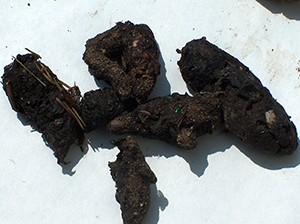
If you look closely at the opossum scats in this picture, you will notice tiny, iridescent specks of Green Fruit
Beetle exoskeleton. This animal will readily eat adults and larvae of the Green Fruit Beetle, Cotinis mutabilis. Photo by Dr. Hanif Gulmahamad
This begs the question: Why is this animal so successful in human-created environments? Here are 10 probable reasons:
- Opossums are omnivorous generalists that will essentially eat anything, including plant and animal matter. Their diet includes insects, earthworms, slugs, snails, crayfish, snakes, lizards and frogs; small mammals such meadow voles, rats, mice and young rabbits; small birds (especially fledglings that fall out of their nests), eggs, grasses, vegetables, fruits, berries, grains, carrion (dead animal material); and trash thrown out by humans.
- Fruits from backyard trees provide a reliable source of food for opossums. Opossums love to raid vegetable gardens, and they are often quicker to the harvest than humans.
- They also love to dine on pet food left outdoors overnight. Pet owners often routinely provide two of their essential survival requirements: food and water.
- If your trash containers are not properly secured with tight-fitting lids, these animals will access the contents. How often have you been rousted from your sleep by opossums rattling around your trash receptacles?
- Opossums are frequently seen along roadways because they are sniffing out and feeding on roadkill, sometimes colloquially called “road pizzas.” They will eat carrion on highways such as reptiles, lizards, birds, rodents, domestic cats and anything else that were run over by vehicles. It is common to find fast food bags and containers with remnants of food along roads that have been torn apart by animals. Along a one-mile stretch of Turner Avenue south of Riverside Drive in Archibald Ranch, in my neighborhood in Ontario, Calif., during the first four months of 2013, I counted four opossums that were killed by vehicles. They often fall victim because of their habit of seeking out roadkill on highways at night.
- Excessive irrigation around human habitation and workplaces provide ideal conditions for opossums. Southern California is in the midst of a four-year drought. All vegetation in areas that are not irrigated dry up and die early in spring. Wildlife are forced to migrate to the oases in human-created environments to find food, shelter and water.
-
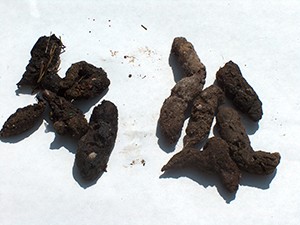
Pictured here are fresh opossum scats on the left and dried ones on the right. Unlike domestic cat droppings, opossum scats often contain fibrous material reflecting their food sources. Photo by Dr. Hanif Gulmahamad
Human-modified environments, such as homes, schools, workplaces, ballparks and entertainment venues, are prolific. They provide the three most critical resources for opossum survival and reproduction: food, water and harborage.
- Opossums are nocturnal animals that do their mischief at night, and thus are seldom seen or confronted by people. Uninformed homeowners often mistake one of their telltale signs, their droppings, for that of domestic cats.
- City utility structures often provide protected harborage for opossums. Examples include unmaintained power line corridors, railway properties and freeway embankments.
- Opossums use the tops of concrete block wall fences in residential neighborhoods as highways. They travel at leisure during the night, free from molestation, attack and harassment by domestic dogs.
Problems caused by opossums in residential areas
These animals can become terrible monsters when they frequent residential properties, creating numerous problems. Opossums:
- consume fruits, nuts, leafy greens, berries and vegetables; what they don’t eat, they contaminate
- create a racket, especially when they engage in fights with domestic animals (particularly dogs), rousting people from sleep at night
- trigger neighborhood dogs into barking frenzy at night
- consume companion animal food, contaminating food and water dishes
- get into conflicts with companion animals over food and water, and they can inflict serious injury with their sharp, pointed teeth
- have been known to enter homes through pet doors in search of food
- often take up residence in attics, garages, beneath houses, under steps, porches, decks, outdoor sheds, in firewood piles, rock piles, and stacks of lumber
-
create smelly latrines on residential property where they regularly urinate and defecate; fresh scats are black, and as they dry out, they turn grayish in color; they drop their feces on top of the ground, and make no attempt to cover or conceal them with soil as domestic cats do (this is one way to tell opossum scats from that of domestic cats)
- leave feces and odors that attract flies; iridescent green flecks seen in scats are tiny fragments of the exoskeleton of the green fruit beetle, Cotinis mutabilis, which this animal readily consumes, and some opossum scats contain fibrous material, if they were feeding on plant matter
- sometimes defecate on garden pathways, stepping stones, patios and porches
- are often the hosts of large numbers of fleas, which they deposit yards from where they readily infest dogs, cats and other domestic animals (cat fleas and dog fleas, which are common on opossums in the urban environment, readily bite humans)
- often harbor ticks, mites and lice, which can transfer easily to pets when they interface in the urban environment
- have been associated with many diseases such as leptospirosis, tuberculosis, relapsing fever, tularemia, spotted fever, toxoplasmosis, coccidiosis, trichomoniasis and Chagas disease
- should be considered an equine health threat if they make a den or feed where horses are being housed and/or have access to horses’ food or water because the protozoan Sarcocystis neurona is believed to be a major contributing factor of a neurologic disease in horses known as equine protozoal myeloencephalitis, or EPM (opossums are the definitive hosts, and horses and other mammals are the aberrant hosts of this protozoan; horses can contract the disease if they ingest sporocysts from opossum feces-contaminated food or water)
What to do about opossums?
Once they find a habitat that supplies their basic needs, opossums keep visiting the location regularly. Homeowners with dogs that have free range of their yards at night are not bothered by these creatures, because opossums dare not descend from the tops of fences, which they use as highways. When dogs are not present in the yard at night, however, opossums rule the roost. These denizens of the dark just move in and take over.
For instance, my next-door neighbor has two dogs, and his property is free of opossums. Within a three-month period, however, I was forced to trap and remove six opossums from my property, which is a typical tract home in a neighborhood that was built in 1991. These animals have complex, but loose social relationships, with overlapping home ranges. When one animal is removed, another quickly takes over its territory, particularly when high populations exist in the area.
The California Fish and Game Code classifies opossums as nongame mammals. If they are damaging crops or other property of which you are the owner or tenant, you may control them using any humane, legal means. The regulations prohibit the relocation of captured wildlife without written permission from the department, however.
In California, structural pest management has been loosely defined as pests in, on, or invading structures. Opossums marauding in your yard and backyard gardens do not fall within the purview of a structural pest control license, which is issued by the Structural Pest Control Board. You need a Qualified Applicator License (QAL) in the category: Residential, Industrial, and Institutional pest control, issued by the California Department of Pesticide Regulation (DPR), to address wildlife issues. The following statement occurs on the reverse side of a QAL wallet license: “This License does not authorize any person to engage in the Business of pest control. A DPR Pest Control Business License is required, in addition to this Qualified Applicator License to engage in the Business of Pest Control for hire.” This distinction is not clearly understood by many structural pest management operators in the state, and it is frequently overlooked and ignored. However, in case of litigation, you will be painfully reminded of this requirement. PMPs should check with their local regulations before they accept the next opossum call.
Dr. Hanif Gulmahamad, BCE, PCA is an urban and structural entomologist and consultant based in Ontario, Calif. He can be reached at entodoc@verizon.net.
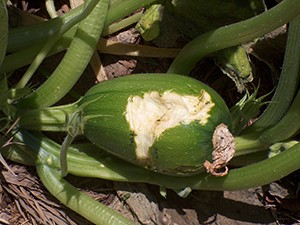
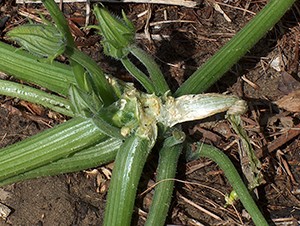
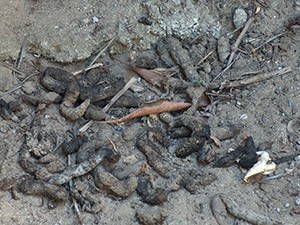
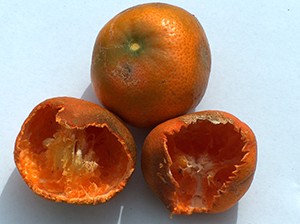
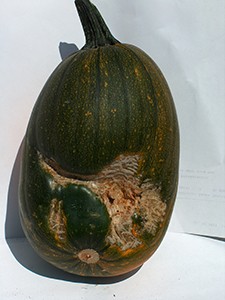
Leave A Comment